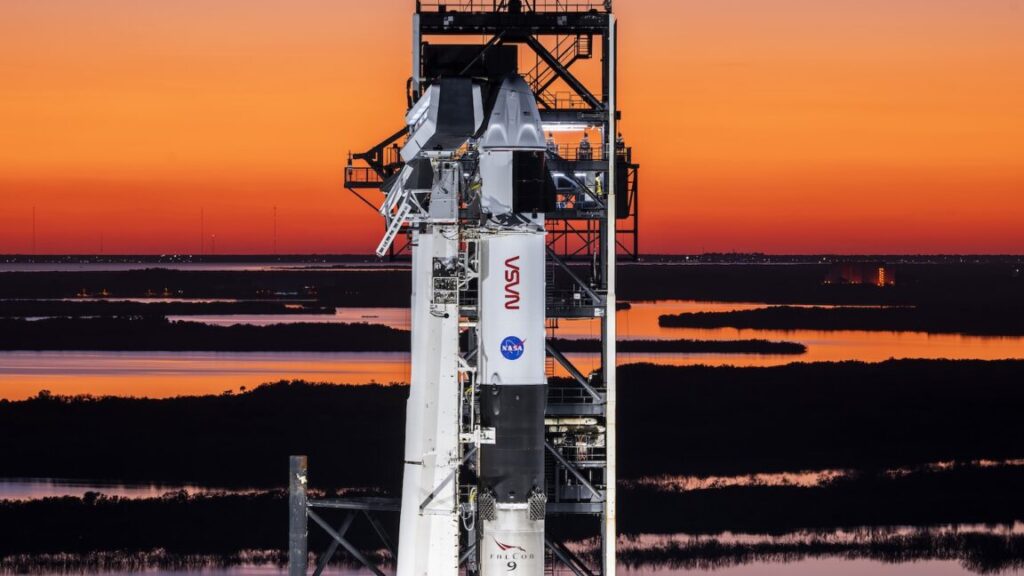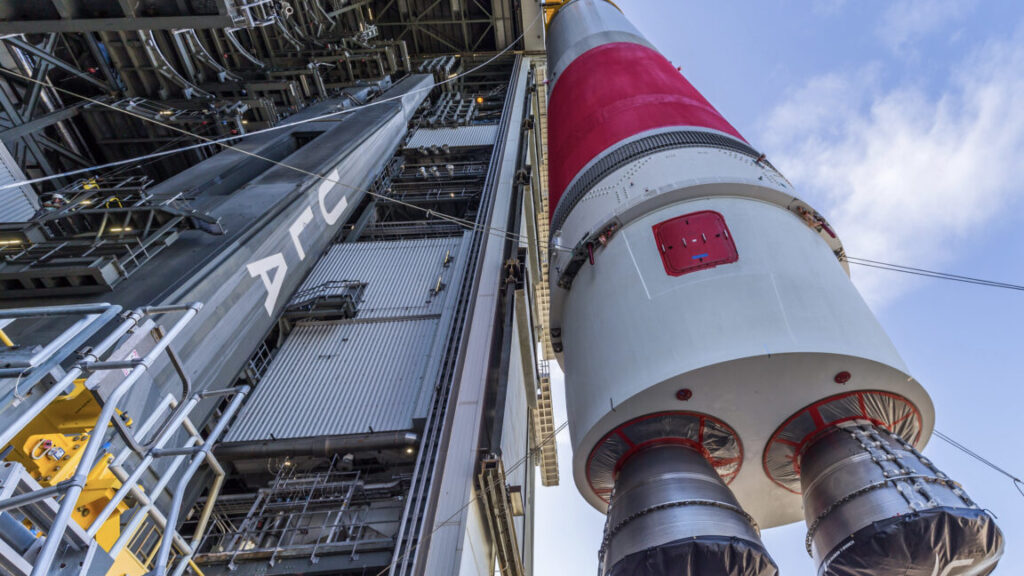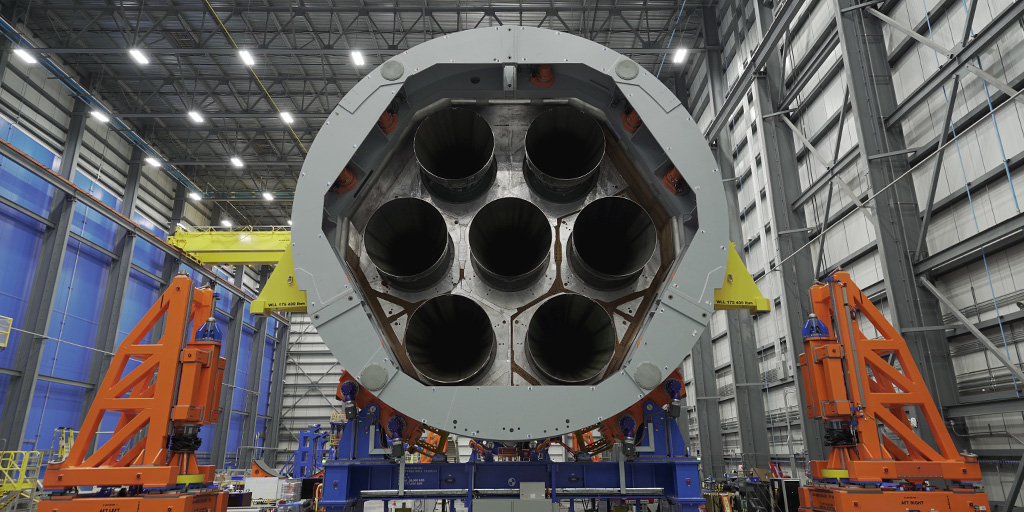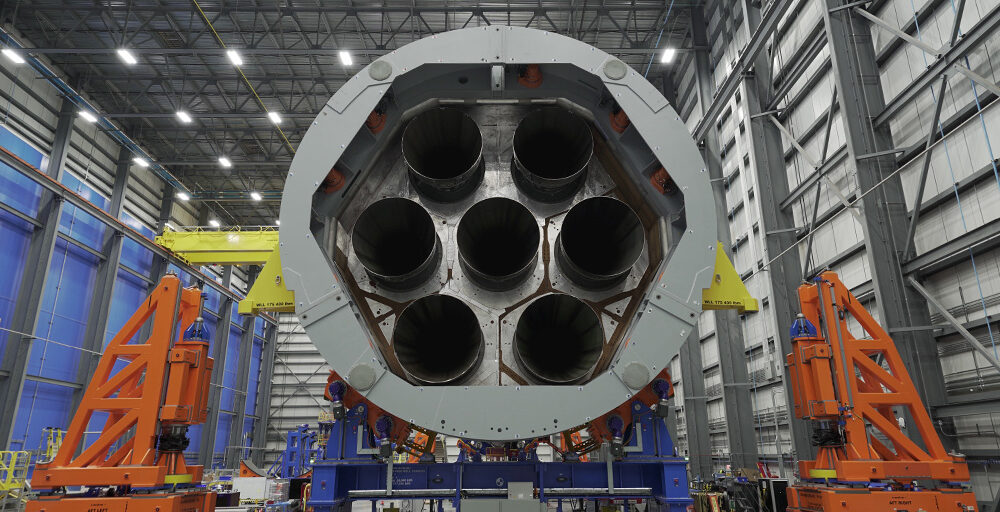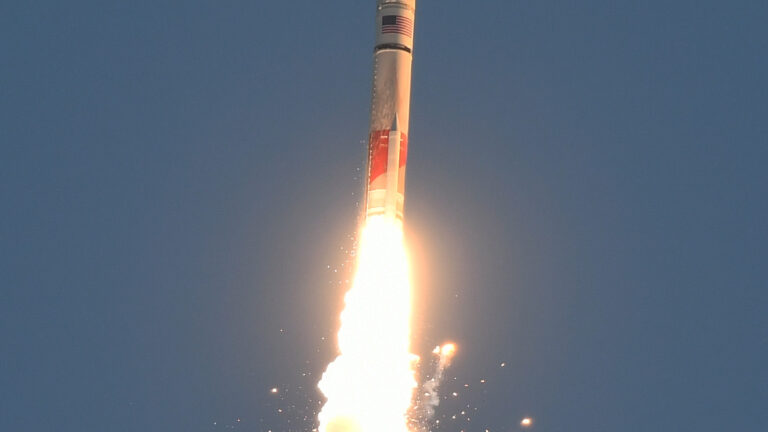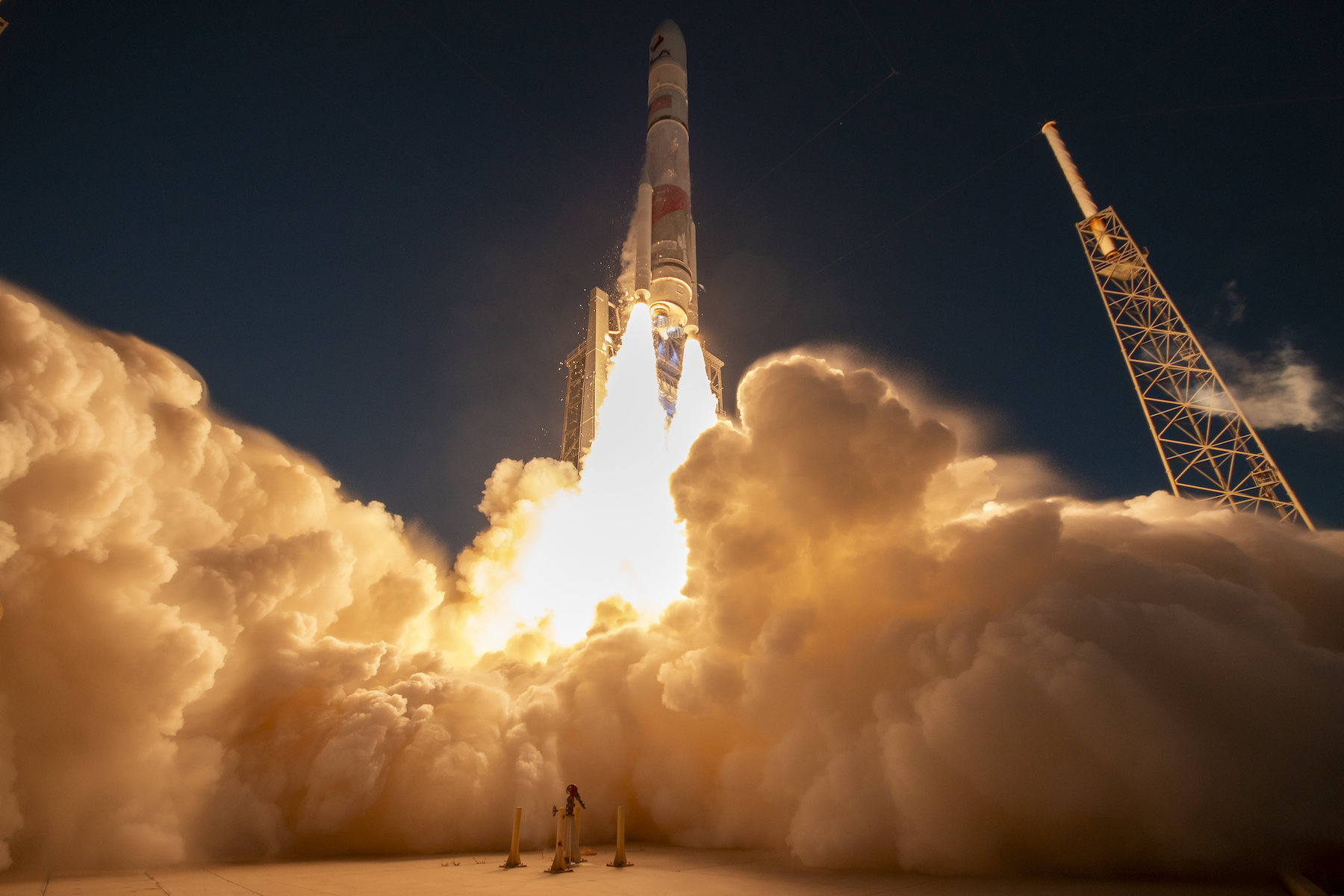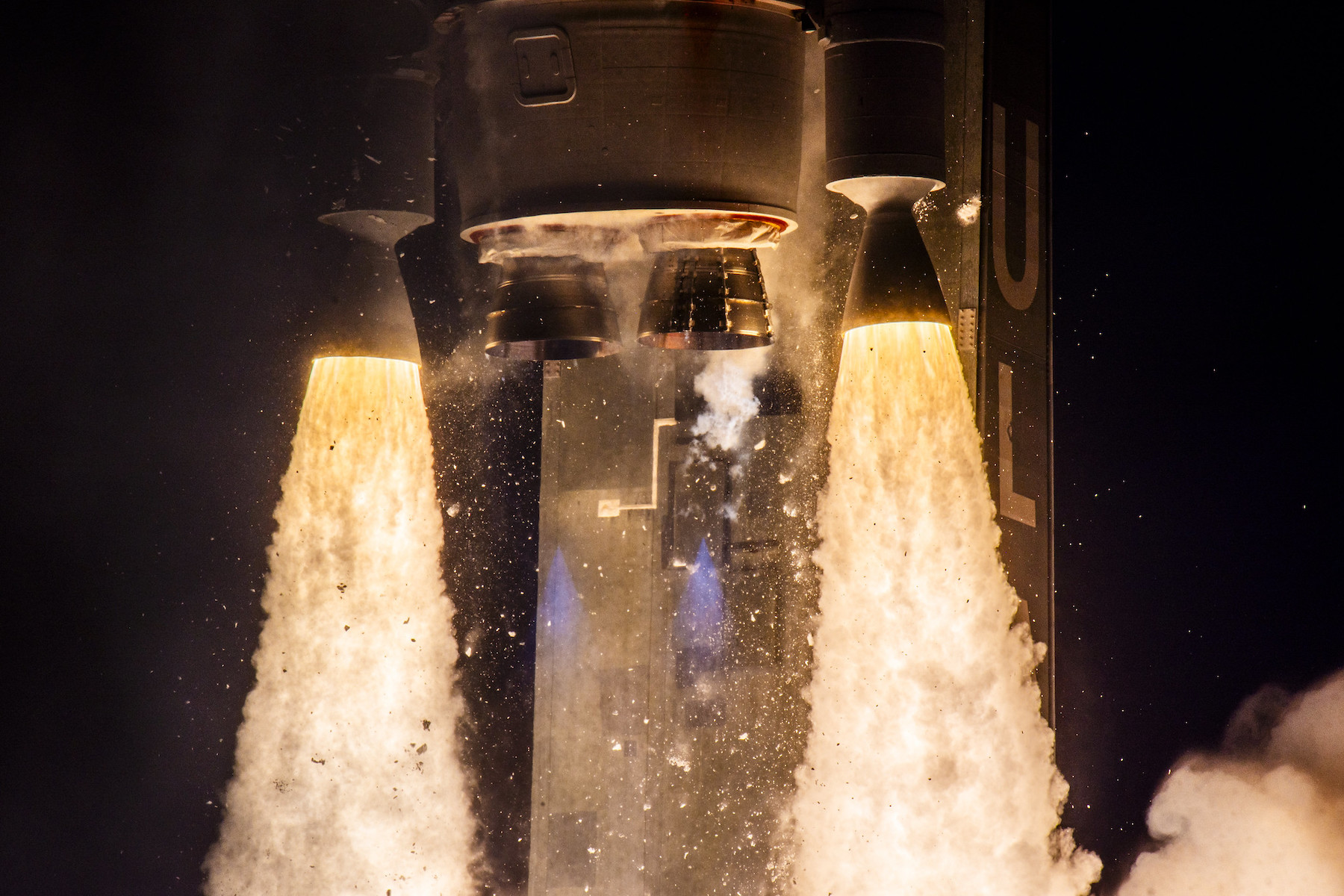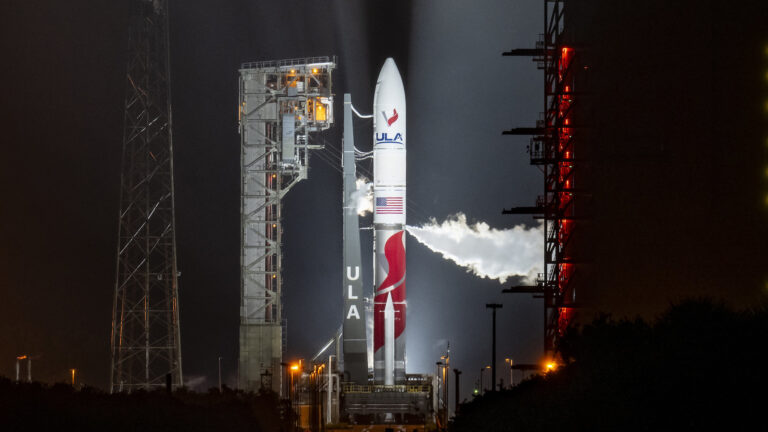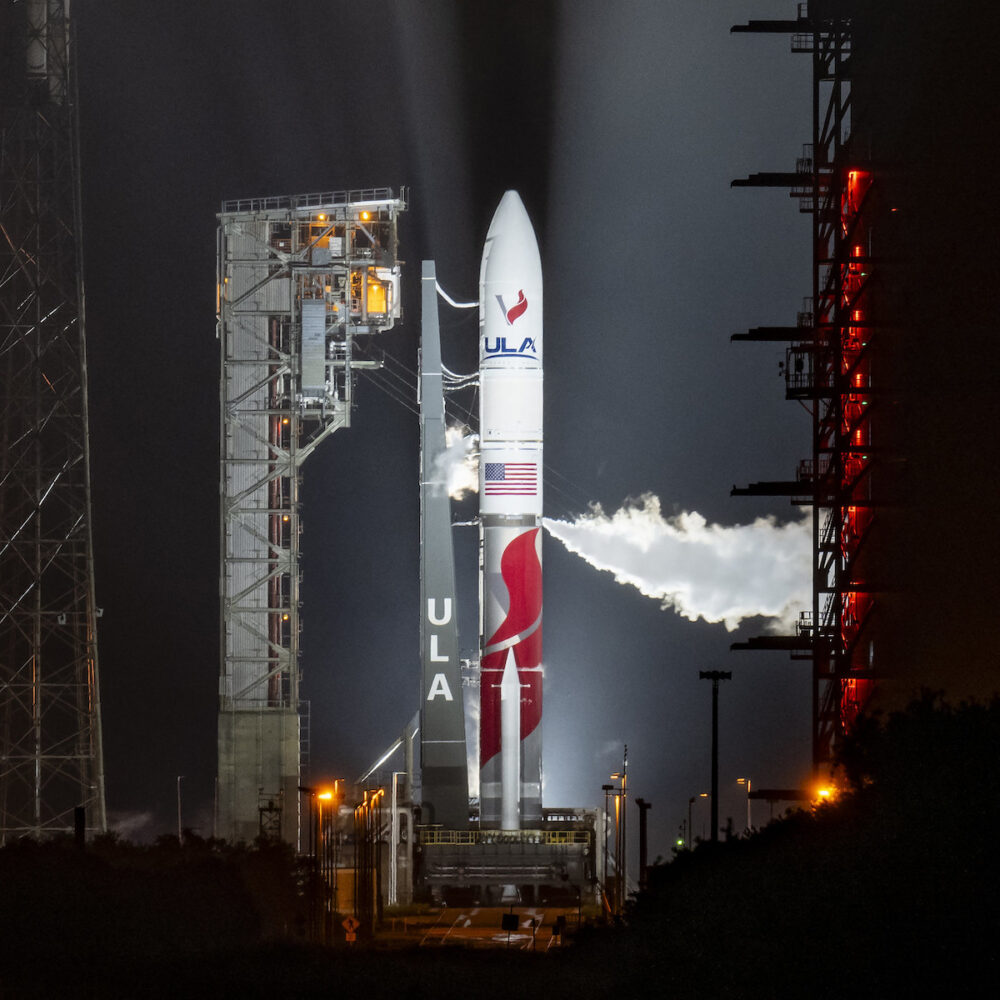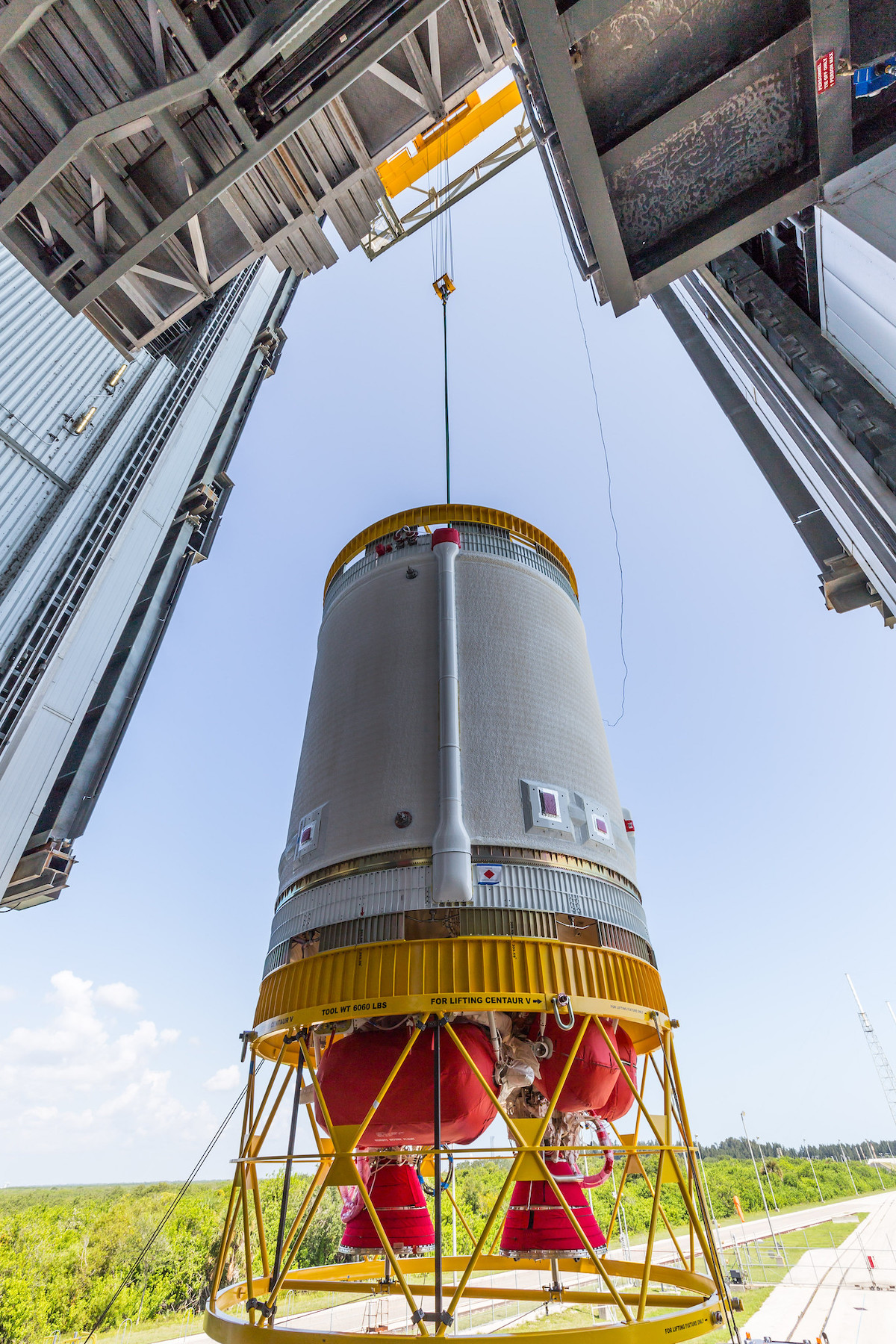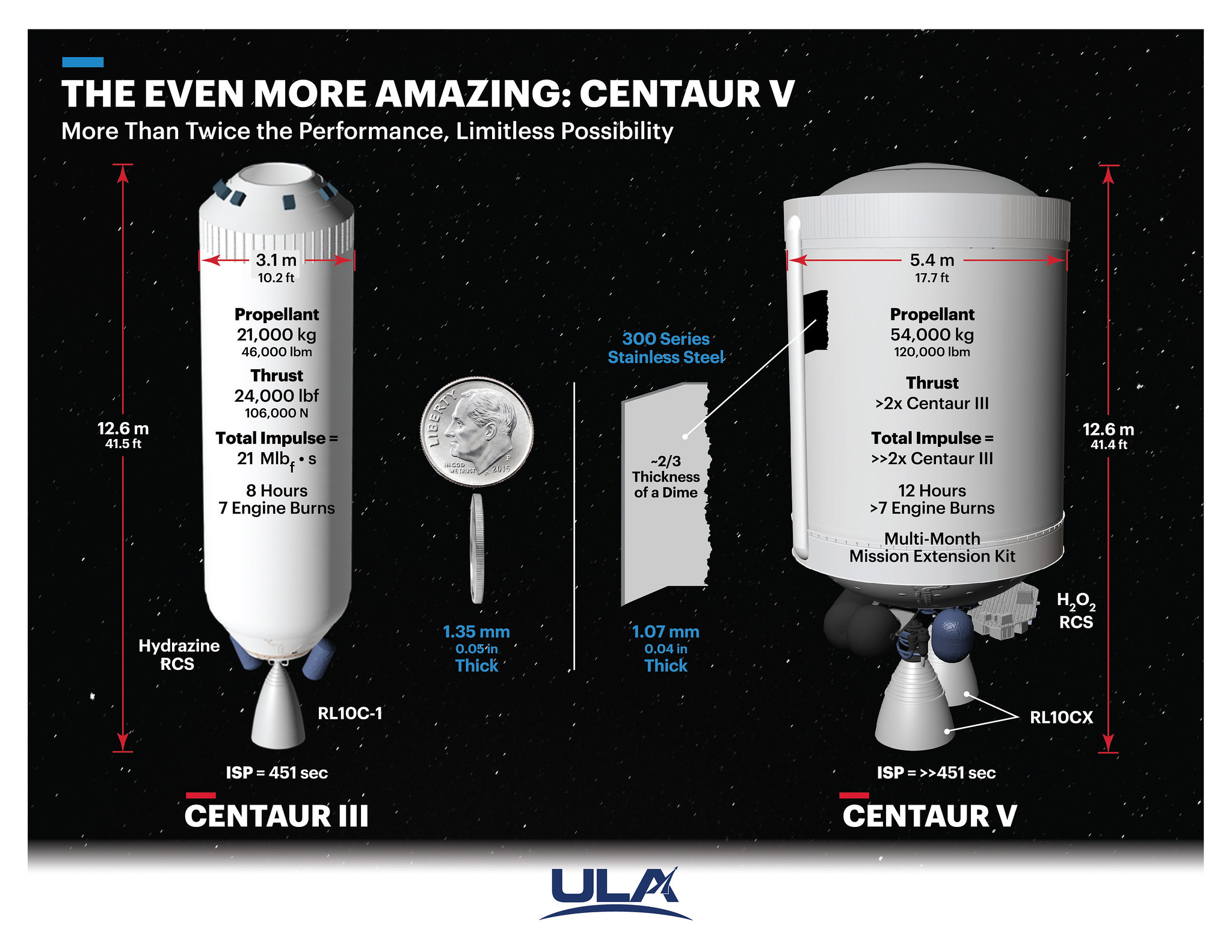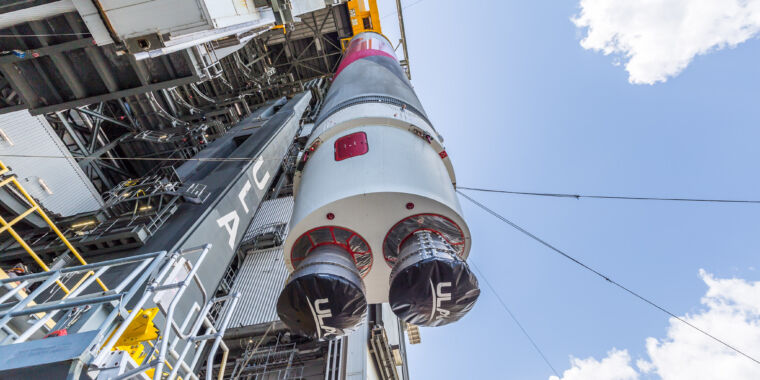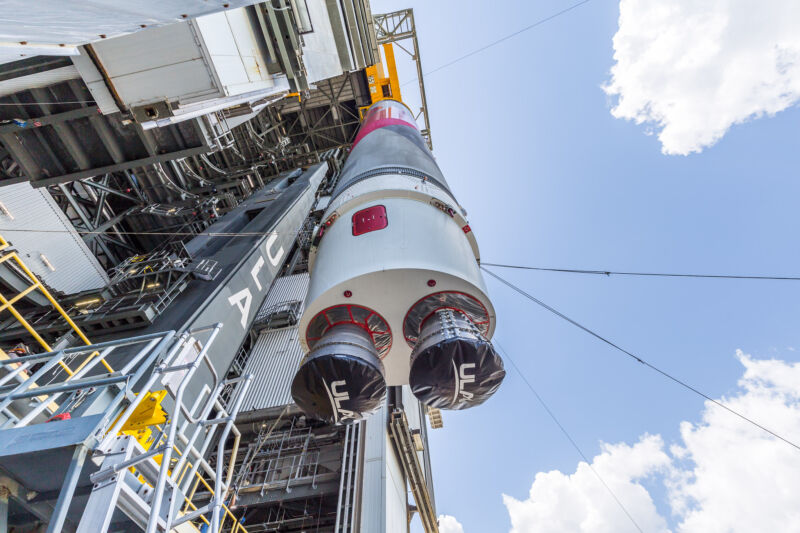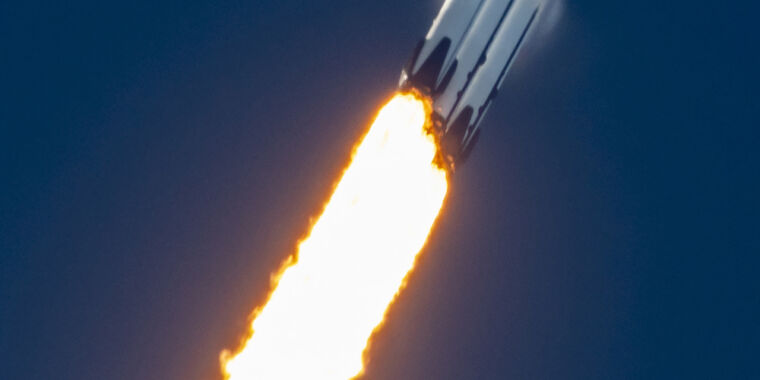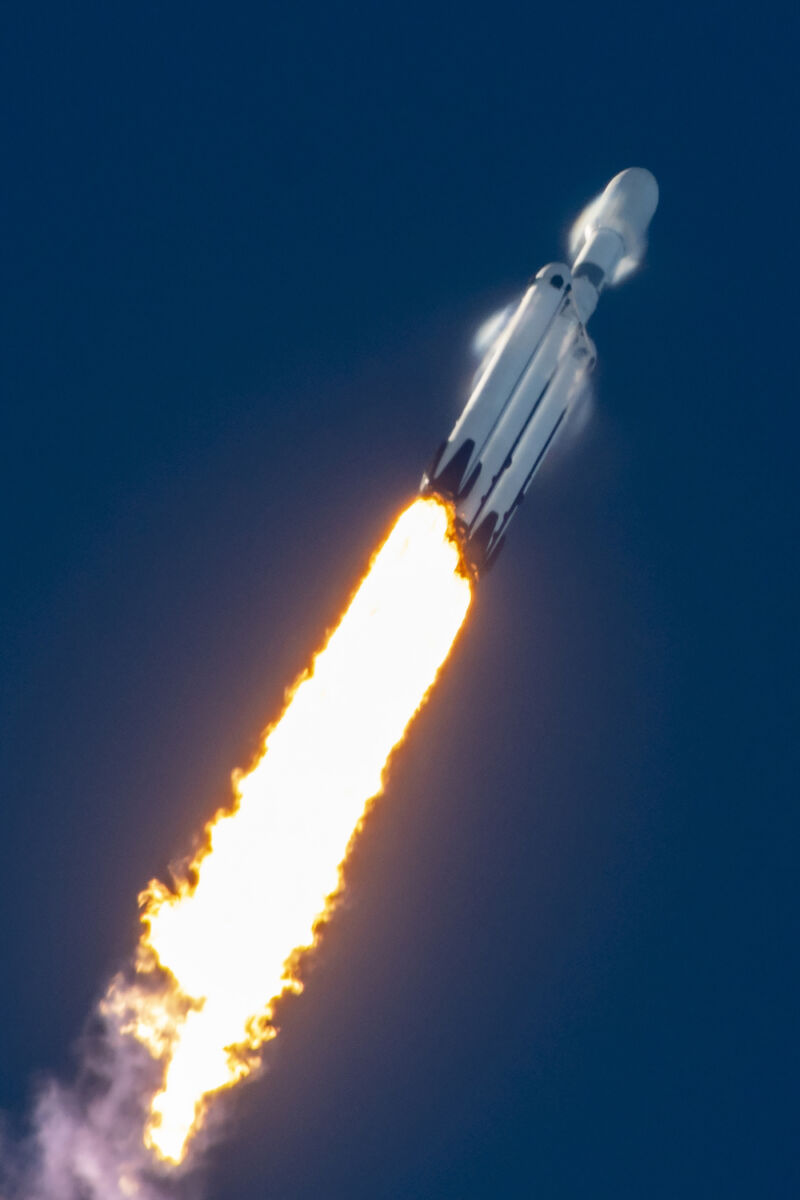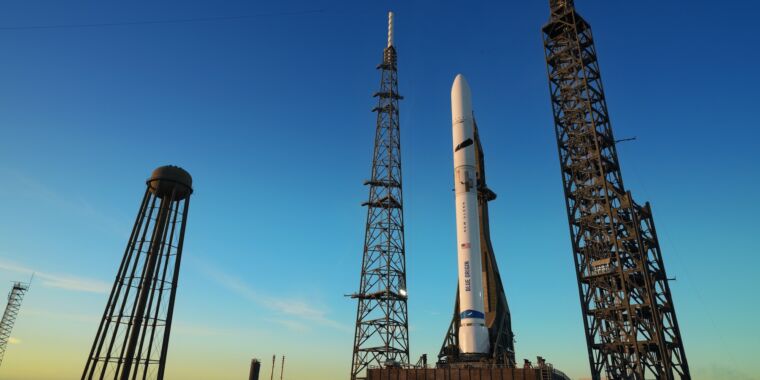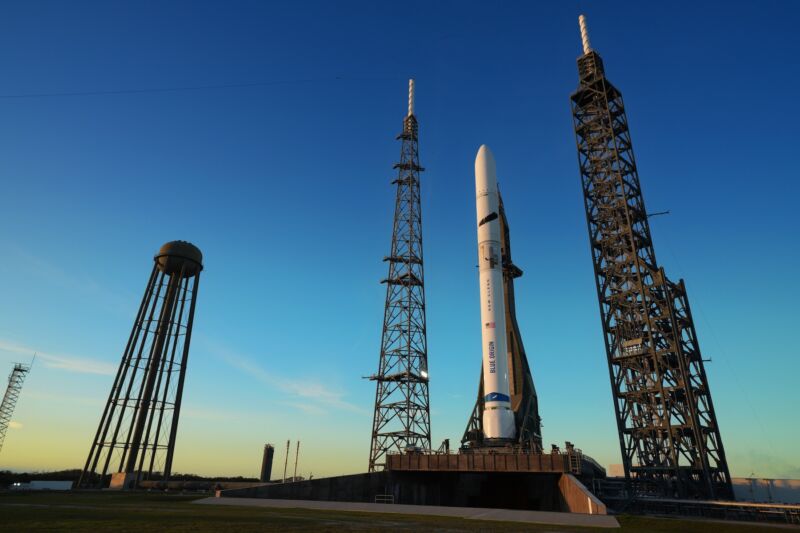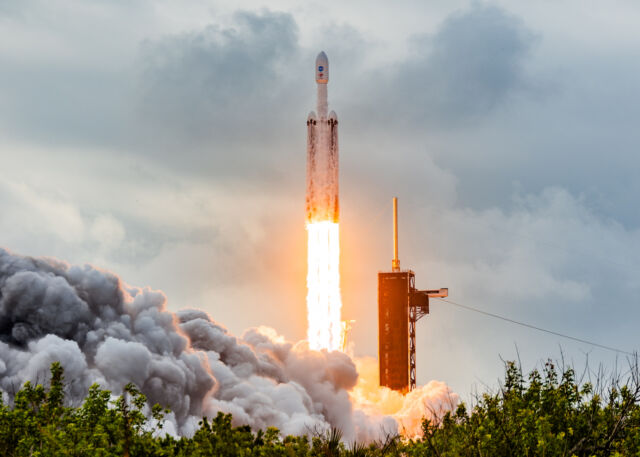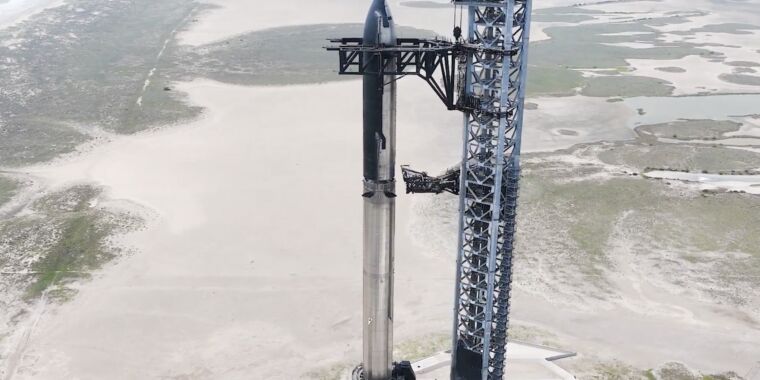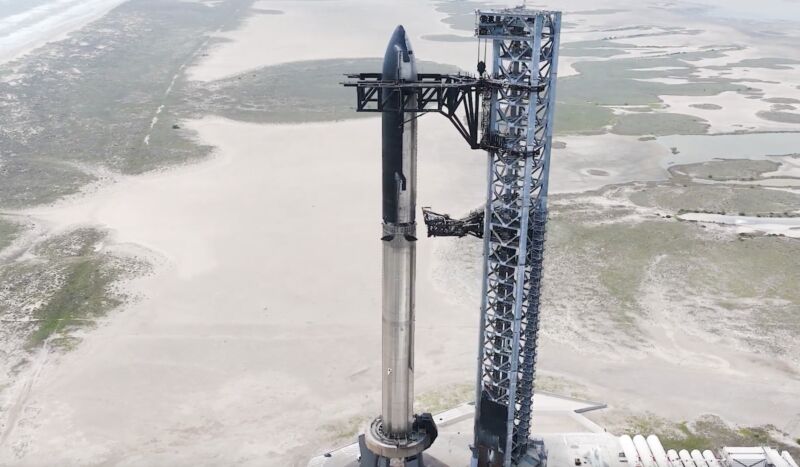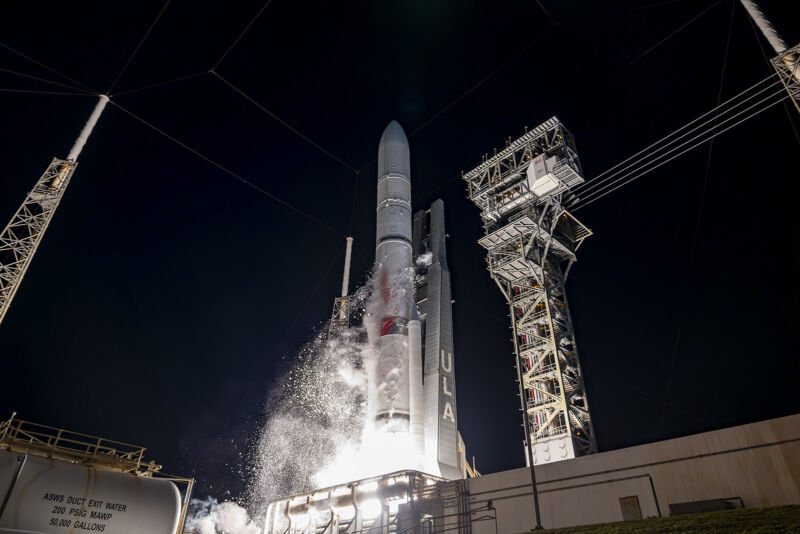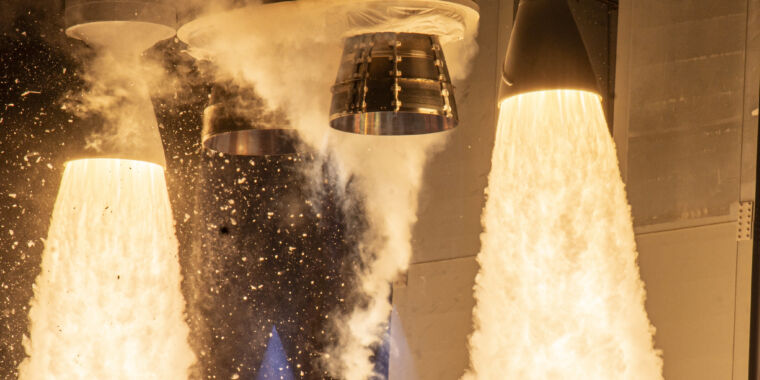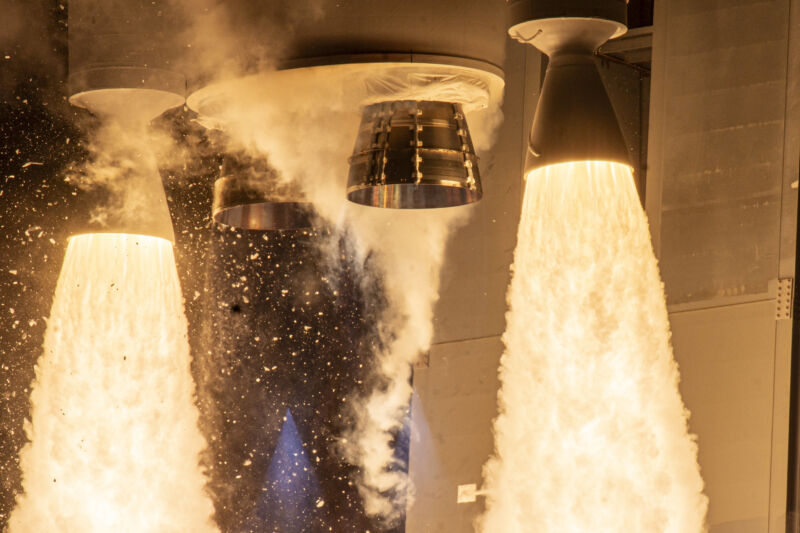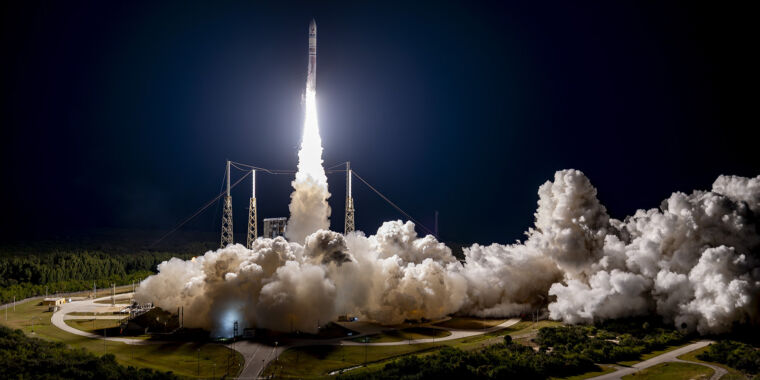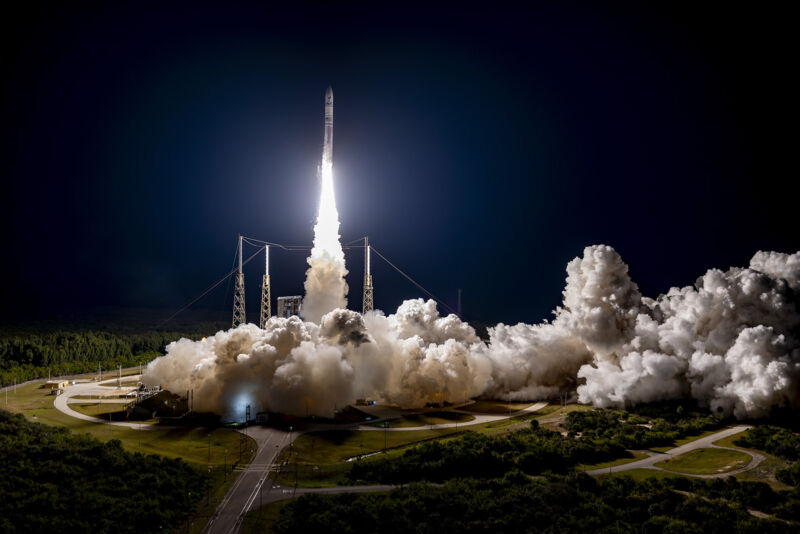Rocket Report: ULA confirms cause of booster anomaly; Crew-10 launch on tap
The head of Poland’s space agency was fired over a bungled response to SpaceX debris falling over Polish territory.
A SpaceX Falcon 9 rocket with the company’s Dragon spacecraft on top is seen during sunset Tuesday at Launch Complex 39A at NASA’s Kennedy Space Center in Florida. Credit: SpaceX
Welcome to Edition 7.35 of the Rocket Report! SpaceX’s steamroller is still rolling, but for the first time in many years, it doesn’t seem like it’s rolling downhill. After a three-year run of perfect performance—with no launch failures or any other serious malfunctions—SpaceX’s Falcon 9 rocket has suffered a handful of issues in recent months. Meanwhile, SpaceX’s next-generation Starship rocket is having problems, too. Kiko Dontchev, SpaceX’s vice president of launch, addressed some (but not all) of these concerns in a post on X this week. Despite the issues with the Falcon 9, SpaceX has maintained a remarkable launch cadence. As of Thursday, SpaceX has launched 28 Falcon 9 flights since January 1, ahead of last year’s pace.
As always, we welcome reader submissions. If you don’t want to miss an issue, please subscribe using the box below (the form will not appear on AMP-enabled versions of the site). Each report will include information on small-, medium-, and heavy-lift rockets as well as a quick look ahead at the next three launches on the calendar.

Alpha rocket preps for weekend launch. While Firefly Aerospace is making headlines for landing on the Moon, its Alpha rocket is set to launch again as soon as Saturday morning from Vandenberg Space Force Base, California. The two-stage, kerosene-fueled rocket will launch a self-funded technology demonstration satellite for Lockheed Martin. It’s the first of up to 25 launches Lockheed Martin has booked with Firefly over the next five years. This launch will be the sixth flight of an Alpha rocket, which has become a leader in the US commercial launch industry for dedicated missions with 1 ton-class satellites.
Firefly’s OG … The Alpha rocket was Firefly’s first product, and it has been a central piece of the company’s development since 2014. Like Firefly itself, the Alpha rocket program has gone through multiple iterations, including a wholesale redesign nearly a decade ago. Sure, Firefly can’t claim any revolutionary firsts with the Alpha rocket, as it can with its Blue Ghost lunar lander. But without Alpha, Firefly wouldn’t be where it is today. The Texas-based firm is one of only four US companies with an operational orbital-class rocket. One thing to watch for is how quickly Firefly can ramp up its Alpha launch cadence. The rocket only flew once last year.
Isar Aerospace celebrates another win. In last week’s Rocket Report, we mentioned that the German launch startup Isar Aerospace won a contract with a Japanese company to launch a 200-kilogram commercial satellite in 2026. But wait, there’s more! On Wednesday, the Norwegian Space Agency announced it awarded a contract to Isar Aerospace for the launch of a pair of satellites for the country’s Arctic Ocean Surveillance initiative, European Spaceflight reports. The satellites are scheduled to launch on Isar’s Spectrum rocket from Andøya Spaceport in Norway by 2028.
First launch pending … These recent contract wins are a promising sign for Isar Aerospace, which is also vying for contracts to launch small payloads for the European Space Agency. The Spectrum rocket could launch on its inaugural flight within a matter of weeks, and if successful, it could mark a transformative moment for the European space industry, which has long been limited to a single launch provider: the French company Arianespace. (submitted by EllPeaTea)
The easiest way to keep up with Eric Berger’s and Stephen Clark’s reporting on all things space is to sign up for our newsletter. We’ll collect their stories and deliver them straight to your inbox.
Mother Nature holds up Oz launch. The first launch by Gilmour Space has been postponed again due to a tropical cyclone that brought severe weather to Australia’s Gold Coast region earlier this month, InnovationAus.com reports. Tropical Cyclone Alfred didn’t significantly impact Gilmour’s launch site, but the storm did cause the company to suspend work at its corporate headquarters in Southeast Queensland. With the storm now over, Gilmour is reassessing when it might be ready to launch its Eris rocket. Reportedly, the delay could be as long as two weeks or more.
A regulatory storm … Gilmour aims to become the first Australian company to launch a rocket into orbit. Last month, Gilmour announced the launch date for the Eris rocket was set for no earlier than March 15, but Tropical Cyclone Alfred threw this schedule out the window. Gilmour said it received a launch license from the Australian Space Agency in November and last month secured approvals to clear airspace around the launch site. But there’s still a hitch. The license is conditional on final documentation for the launch being filed and agreed with the space agency, and this process is stretching longer than anticipated. (submitted by ZygP)

What is going on at SpaceX? As we mention in the introduction to this week’s Rocket Report, it has been an uncharacteristically messy eight months for SpaceX. These speed bumps include issues with the Falcon 9 rocket’s upper stage on three missions, two lost Falcon 9 boosters, and consecutive failures of SpaceX’s massive Starship rocket on its first two test flights of the year. So what’s behind SpaceX’s bumpy ride? Ars wrote about the pressures facing SpaceX employees as Elon Musk pushes his workforce ever-harder to accelerate toward what Musk might call a multi-planetary future.
Headwinds or tailwinds? … No country or private company ever launched as many times as SpaceX flew its fleet of Falcon 9 rockets in 2024. At the same time, the company has been attempting to move its talented engineering team off the Falcon 9 and Dragon programs and onto Starship to keep that ambitious program moving forward. This is all happening as Musk has taken on significant roles in the Trump administration, stirring controversy and raising questions about his motives and potential conflicts of interest. However, it may be not so much Musk’s absence from SpaceX that is causing these issues but more the company’s relentless culture. As my colleague Eric Berger suggested in his piece, it seems possible that, at least for now, SpaceX has reached the speed limit for commercial spaceflight.
A titan of Silicon Valley enters the rocket business. Former Google chief executive Eric Schmidt has taken a controlling interest in the Long Beach, California-based Relativity Space, Ars reports. Schmidt’s involvement with Relativity has been quietly discussed among space industry insiders for a few months. Multiple sources told Ars that he has largely been bankrolling the company since the end of October, when the company’s previous fundraising dried up. Now, Schmidt is Relativity’s CEO.
Unclear motives … It is not immediately clear why Schmidt is taking a hands-on approach at Relativity. However, it is one of the few US-based companies with a credible path toward developing a medium-lift rocket that could potentially challenge the dominance of SpaceX and its Falcon 9 rocket. If the Terran R booster becomes commercially successful, it could play a big role in launching megaconstellations. Schmidt’s ascension also means that Tim Ellis, the company’s co-founder, chief executive, and almost sole public persona for nearly a decade, is now out of a leadership position.
Falcon 9 deploys NASA’s newest space telescope. Satellites come in all shapes and sizes, but there aren’t any that look quite like SPHEREx, an infrared observatory NASA launched Tuesday night in search of answers to simmering questions about how the Universe, and ultimately life, came to be, Ars reports. The SPHEREx satellite rocketed into orbit from California aboard a SpaceX Falcon 9 rocket, beginning a two-year mission surveying the sky in search of clues about the earliest periods of cosmic history, when the Universe rapidly expanded and the first galaxies formed. SPHEREx will also scan for pockets of water ice within our own galaxy, where clouds of gas and dust coalesce to form stars and planets.
Excess capacity … SPHEREx has lofty goals, but it’s modest in size, weighing just a little more than a half-ton at launch. This meant the Falcon 9 rocket had plenty of extra room for four other small satellites that will fly in formation to image the solar wind as it travels from the Sun into the Solar System. The four satellites are part of NASA’s PUNCH mission. SPHEREx and PUNCH are part of NASA’s Explorers program, a series of cost-capped science missions with a lineage going back to the dawn of the Space Age. SPHEREx and PUNCH have a combined cost of about $638 million. (submitted by EllPeaTea)
China has launched another batch of Internet satellites. A new group of 18 satellites entered orbit Tuesday for the Thousand Sails constellation with the first launch from a new commercial launch pad, Space News reports. The satellites launched on top of a Long March 8 rocket from Hainan Commercial Launch Site near Wenchang on Hainan Island. The commercial launch site has two pads, the first of which entered service with a launch last year. This mission was the first to launch from the other pad at the commercial spaceport, which is gearing up for an uptick in Chinese launch activity to continue deploying satellites for the Thousand Sails network and other megaconstellations.
Sailing on … The Thousand Sails constellation, also known as Qianfan, or G60 Starlink, is a broadband satellite constellation spearheaded by Shanghai Spacecom Satellite Technology (SSST), also known as Spacesail, Space News reported. The project, which aims to deploy 14,000 satellites, seeks to compete in the global satellite Internet market. Spacesail has now launched 90 satellites into near-polar orbits, and the operator previously stated it aims to have 648 satellites in orbit by the end of 2025. If Spacesail continues launching 18 satellites per rocket, this goal would require 31 more launches this year. (submitted by EllPeaTea)
NASA, SpaceX call off astronaut launch. With the countdown within 45 minutes of launch, NASA called off an attempt to send the next crew to the International Space Station Wednesday evening to allow more time to troubleshoot a ground system hydraulics issue, CBS News reports. During the countdown Wednesday, SpaceX engineers were troubleshooting a problem with one of two clamp arms that hold the Falcon 9 rocket to its strongback support gantry. Hydraulics are used to retract the two clamps prior to launch.
Back on track … NASA confirmed Thursday SpaceX ground teams completed inspections of the hydraulics system used for the clamp arm supporting the Falcon 9 rocket and successfully flushed a suspected pocket of trapped air in the system, clearing the way for another launch attempt Friday evening. This mission, known as Crew-10, will ferry two NASA astronauts, a Japanese mission specialist, and a Russian cosmonaut to the space station. They will replace a four-person crew currently at the ISS, including Butch Wilmore and Suni Williams, who have been in orbit since last June after flying to space on Boeing’s Starliner capsule. Starliner returned to Earth without its crew due to a problem with overheating thrusters, leaving Wilmore and Williams behind to wait for a ride home with SpaceX.
SpaceX’s woes reach Poland’s space agency. The president of the Polish Space Agency, Grzegorz Wrochna, has been dismissed following a botched response to the uncontrolled reentry of a Falcon 9 second stage that scattered debris across multiple locations in Poland, European Spaceflight reports. The Falcon 9’s upper stage was supposed to steer itself toward a controlled reentry last month after deploying a set of Starlink satellites, but a propellant leak prevented it from doing so. Instead, the stage remained in orbit for nearly three weeks before falling back into the atmosphere February 19, scattering debris fragments at several locations in Poland.
A failure to communicate … In the aftermath of the Falcon 9’s uncontrolled reentry, the Polish Space Agency (POLSA) claimed it sent warnings of the threat of falling space debris to multiple departments of the Polish government. One Polish ministry disputed this claim, saying it was not adequately warned about the uncontrolled reentry. POLSA later confirmed it sent information regarding the reentry to a wrong email address. Making matters worse, the Polish Space Agency reported it was hacked on March 2. The Polish government apparently had enough and fired the head of the space agency March 11.

Vulcan booster anomaly blamed on “manufacturing defect.” The loss of a solid rocket motor nozzle on the second flight of United Launch Alliance’s Vulcan Centaur last October was caused by a manufacturing defect, Space News reports. In a roundtable with reporters Wednesday, ULA chief executive Tory Bruno said the problem has been corrected as the company awaits certification of the Vulcan rocket by the Space Force. The nozzle fell off the bottom of one of the Vulcan launcher’s twin solid rocket boosters about a half-minute into its second test flight last year. The rocket continued its climb into space, but ULA and Northrop Grumman, which supplies solid rocket motors for Vulcan, set up an investigation to find the cause of the nozzle malfunction.
All the trimmings … Bruno said the anomaly was traced to a “manufacturing defect” in one of the internal parts of the nozzle, an insulator. Specific details, he said, remained proprietary, according to Space News. “We have isolated the root cause and made appropriate corrective actions,” he said, which were confirmed in a static-fire test of a motor at a Northrop test site in Utah in February. “So we are back continuing to fabricate hardware and, at least initially, screening for what that root cause was.” Bruno said the investigation was aided by recovery of hardware that fell off the motor while in flight and landed near the launch pad in Florida, as well as “trimmings” of material left over from the manufacturing process. ULA also recovered both boosters from the ocean so engineers could compare the one that lost its nozzle to the one that performed normally. The defective hardware “just stood out night and day,” Bruno said. “It was pretty clear that that was an outlier, far out of family.” Meanwhile, ULA has trimmed its launch forecast for this year, from a projection of up to 20 launches down to a dozen. (submitted by EllPeaTea)
Next three launches
March 14: Falcon 9 | Crew-10 | Kennedy Space Center, Florida | 23: 03 UTC
March 15: Electron | QPS-SAR-9 | Mahia Peninsula, New Zealand | 00: 00 UTC
March 15: Long March 2B | Unknown Payload | Jiuquan Satellite Launch Center, China | 04: 10 UTC

Rocket Report: ULA confirms cause of booster anomaly; Crew-10 launch on tap Read More »
